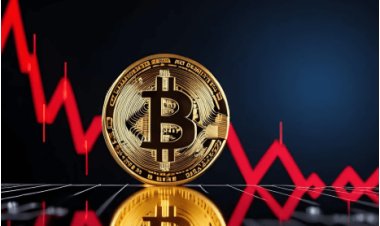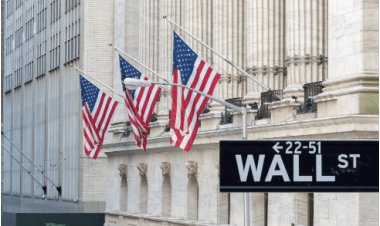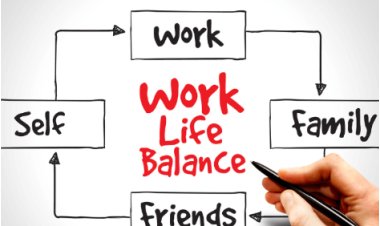Looking Past Technological Buzz: Assessing the State of American Business Health
One Month Ago, Economic Worries Loomed Over Corporate America; Current Outlook More Positive

Just a month ago, corporate America was grappling with the looming threat of a recession. Inflation was rampant, incomes were depressed, and the Federal Reserve was tightening its policies. However, the situation has taken a turn for the better: inflation has eased, the job market remains robust, and the likelihood of a recession has diminished. This optimistic shift, combined with the buzz around the productivity potential of artificial intelligence (AI), has boosted investor confidence. Notably, the S&P 500 index, representing large US companies, surged by nearly 20% this year.
The tech sector and automakers have been particularly prosperous, dominating the S&P 500. These companies, as indicated by our early adopter index (considering factors like IT-related patents, investments, and employment), have performed exceptionally well in the recent earnings season. However, a question arises about the health of sectors less impacted by the technology hype. Here, the situation is multifaceted but ultimately reassuring.
Starting with the negatives, some businesses ill-prepared for the IT-driven future are also facing challenges in the present. Healthcare companies, for instance, are ailing: UBS estimates their profits have dropped by nearly 30% compared to the previous year. CVS Health, ranked 218th in our national IT index, is cutting 5,000 jobs due to a 37% revenue decline.
Energy companies witnessed a 50% drop in profits in the second quarter of 2023 compared to the previous year, partly due to declining commodity prices and sluggish Chinese growth. This downward trend extends to materials firms, with earnings falling by 30%. As a result, S&P 500 firms' total income is projected to have decreased by 5% in the second quarter, year-over-year, according to FactSet.
Despite these challenges, the situation is concentrated in specific sectors. A closer examination reveals that many segments of the non-IT economy exhibit surprising resilience. Capital goods manufacturers like Caterpillar and Raytheon (ranked 204th and 341st, respectively) are believed to have collectively increased their revenue by over 8% in the second quarter, with profits doubling. This could be attributed in part to President Joe Biden's focus on industrial policy.
Even in the oil and gas sector, performance surpasses headline figures. ExxonMobil, the largest player (ranked 236th), reported approximately $8 billion in net profit. While down 56% year-over-year, this is still ExxonMobil's highest second-quarter figure in nearly a decade, barring the exceptional hit in 2022.
Resistance is most apparent in businesses tied to the well-being of the US consumer, who remains financially strained. Consumer staples vendors experienced a 5% increase in profits year-over-year, while non-core consumer goods suppliers saw a 40% revenue uptick. Starbucks, a coffee giant (ranked 116th), reported a quarterly operating profit of $1.6 billion, up 22%, while Kraft Heinz, a seller of food products (ranked 253rd), reported $1.4 billion in operating profit, more than double the previous year.
Consumer goods companies have managed to maintain pricing power. Confectioners, for instance, are paying 11% more for chocolate than last year, yet Hershey (ranked 332) has increased its operating profit by 23% to $561 million. PepsiCo (ranked 245th) raised prices for its beverages and snacks by 15% in the second quarter, resulting in a 75% surge in operating profit to $3.7 billion. The company now anticipates 10% sales growth and a 12% rise in net profit for the year.
Consumer spending is not limited to sweets and beverages; air travel, particularly international travel, is recovering rapidly. American Airlines (ranked 266th), Delta Air Lines (ranked 193), and United Airlines (ranked 183) collectively reported net profits of $4.2 billion last quarter, the highest since 2015. Similarly, hotels are experiencing strong demand from both leisure and business travelers, leading to a 12% year-over-year increase in Hilton's revenue per available room.
However, challenges persist. Consumers are gradually tapping into the savings they amassed during the pandemic, which were supplemented by government stimulus checks. As households spend down these savings, an estimated $500 billion could be depleted by year-end. Although unemployment remains low, wage growth has slowed. The resumption of student loan payments and potential curbs on consumer spending due to rising interest rates are factors that could impact the economy. Furthermore, bankruptcy declarations are on the rise, particularly among companies with weak balance sheets, with 340 firms declaring bankruptcy in the first half of the year.
In conclusion, the economic landscape has shifted positively in recent weeks, with technology and select sectors thriving. Although challenges persist, numerous segments of the non-IT economy display resilience and growth. The future remains uncertain, contingent on factors such as consumer spending, wage trends, and potential interest rate changes.

 chandni
chandni 



